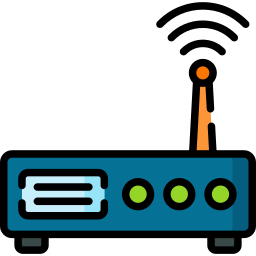
Modem and Network Hardware Components: A Comprehensive Explanation
A modem is a fundamental piece of network hardware that facilitates communication between a local network and the internet. The word “modem” comes from the combination of two words: modulator and demodulator. Its primary function is to convert digital data from a computer or network into analog signals suitable for transmission over telephone lines, cable systems, or other types of infrastructure, and then convert incoming analog signals back into digital data that the computer can understand. This conversion process enables devices within a local area network (LAN) to connect to the internet or other wide area networks (WAN).
Modems serve as the gateway between the user’s home or office network and their internet service provider (ISP). Without a modem, a network would be unable to communicate over the infrastructure provided by the ISP. Various types of modems exist depending on the type of internet service, including DSL modems for telephone line-based connections, cable modems for cable internet, fiber modems for fiber optic connections, and satellite modems for satellite internet.
Functions and Applications of a Modem
Converts digital signals from a computer or router into analog signals that can be transmitted over traditional telephone or cable lines.
Demodulates incoming analog signals from the ISP into digital data for use by local devices.
Acts as the bridge between the local network and the external internet infrastructure.
Provides synchronization between the ISP’s network and the customer’s local network to maintain a stable connection.
Supports various communication standards and protocols based on the type of internet connection, such as DOCSIS for cable modems or V.92 for DSL.
Often includes basic routing capabilities in combination devices known as gateway modems.
Enables internet access for multiple devices when combined with a router or integrated in a modem-router combo.
Monitors connection status and signal quality to maintain optimal data transmission.
Network Hardware Components Related to Modems
Router: While the modem connects a local network to the internet, the router manages the data traffic between devices within the network and directs outgoing and incoming internet data to the right devices.
Switch: Used within a LAN to connect multiple devices, switches distribute data efficiently but do not handle external network connections like modems.
Network Interface Card (NIC): Provides the hardware interface for a device to connect to a network but requires a modem to access the internet.
Access Point (AP): Extends wireless network coverage but relies on the modem and router for internet connectivity and data management.
Firewall Hardware: Protects networks from unauthorized access and cyber threats but does not perform signal conversion like modems.
Cost and Accessibility of Modems
Modems are physical hardware devices that require purchase, making their use generally a paid service. They are available from many manufacturers and can be bought directly by consumers or provided by ISPs. Many internet service providers include a basic modem as part of their service packages, sometimes at no upfront cost, but this is usually factored into the monthly subscription fees. More advanced modems, which support higher speeds or additional features, typically come with higher prices.
It is important to note that using a modem without an active internet subscription with an ISP is not functional, so ongoing service costs are involved even if the modem itself is provided for free. Additionally, some modems are sold outright, allowing customers to avoid rental fees charged by ISPs, which can add up over time.
Comparison with Other Network Hardware
Unlike routers that direct traffic between multiple devices, modems specifically focus on signal conversion to facilitate internet access. Switches and access points enhance internal network performance but do not provide external connectivity. Modems work at the physical and data link layers of the network model and are vital for connecting local devices to the broader internet infrastructure.
Some modern devices combine the functions of modem and router into a single unit, simplifying home network setups but often at a higher cost. Such devices integrate signal conversion with routing capabilities, wireless access points, and sometimes built-in firewalls, providing an all-in-one solution for home or small office networking.
Conclusion
The modem is an indispensable component of network hardware that enables communication between local networks and internet service providers. Its core role is to modulate and demodulate signals, ensuring digital data can be transmitted across various physical media like telephone lines and cable systems. While modems themselves are not free, they are often provided by ISPs or can be purchased by consumers. They differ significantly from other network components such as routers, switches, and access points by focusing specifically on enabling external network connectivity rather than managing internal traffic. Understanding the function and importance of modems is essential for anyone involved in setting up or managing network infrastructure, as it ensures reliable internet access and forms the foundation of modern digital communication.












